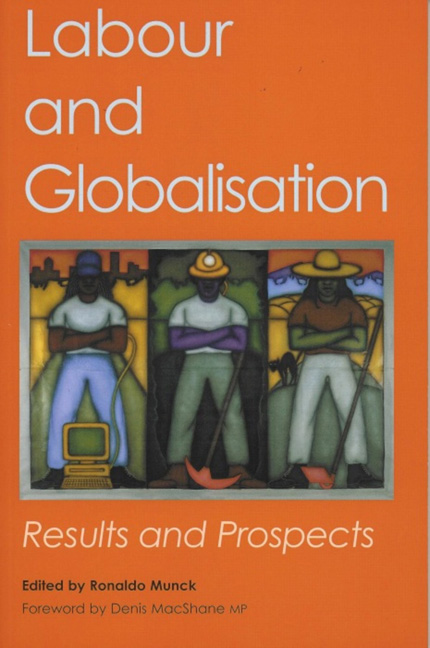Book contents
- Frontmatter
- Contents
- Acknowledgements
- Foreword
- Notes on the Contributors
- List of Abbreviations
- Introduction: Globalisation and Labour Transnationalism
- Part I Global Dimensions
- 1 An Emerging Agenda for Trade Unions?
- 2 The ICFTU and the World Economy: A Historical Perspective
- 3 Globalisation, Imperialism and the Labour Standards Debate
- 4 Towards Global Networked Unions
- Part II Spatial Dimensions
- Part III Social Dimensions
- Index
4 - Towards Global Networked Unions
from Part I - Global Dimensions
- Frontmatter
- Contents
- Acknowledgements
- Foreword
- Notes on the Contributors
- List of Abbreviations
- Introduction: Globalisation and Labour Transnationalism
- Part I Global Dimensions
- 1 An Emerging Agenda for Trade Unions?
- 2 The ICFTU and the World Economy: A Historical Perspective
- 3 Globalisation, Imperialism and the Labour Standards Debate
- 4 Towards Global Networked Unions
- Part II Spatial Dimensions
- Part III Social Dimensions
- Index
Summary
Back in 1847, in The Communist Manifesto, Karl Marx and Friedrich Engels proposed the novel idea that the actual victories that workers were occasionally winning in their struggles with employers were unimportant when compared to the main thing. And the main thing was building up contacts between workers, ending their isolation one from the other, creating something larger and more enduring than the small local trade unions then coming into being. The key, wrote Marx, was the new communications technology then being deployed by capitalism. This idea has persisted largely unchallenged on the left and in labour movements ever since. Progress in general, and in particular the development of new communications technologies, was helping not only capitalism but also its gravediggers, the international proletariat.
The logical extension of Marx's arguments was made a century and a half later by writers such as Peter Waterman and myself: the new communications technologies becoming available in the last decade of the twentieth century would allow the creation not of a fifth International (as some were calling it) but of a first – the first true global organisation of workers. Those new communications technologies included electronic mail (email), the world wide web, instant messaging systems, fax, mobile telephony, videoconferencing, machine translation, digital photography and video, and so on. Just as railways, steamships and the telegraph transformed – and perhaps created – the first labour movements, so these technologies could be expected to transform today's labour movement into something different.
In this chapter, I shall aim first to develop this hypothesis and then to test it against reality. I shall be looking at both the failures and the successes, trying to come up with a balanced view of whether the new technologies have lived up to their promise.
Networked trade unions: the reality
I want to begin by making clear that no one (or at least, no one I knew) was proposing that the popularisation of the world wide web, which began in the early 1990s, would somehow lead inevitably and automatically to the creation of a new workers’ International. That would have been ridiculous. Such a new International, were it ever to be created, would require much more than a personal computer and a few websites – just as trade unions are more than the office equipment one finds in their headquarters or the magazines they produce.
- Type
- Chapter
- Information
- Labour and GlobalisationResults and Prospects, pp. 71 - 82Publisher: Liverpool University PressPrint publication year: 2003



